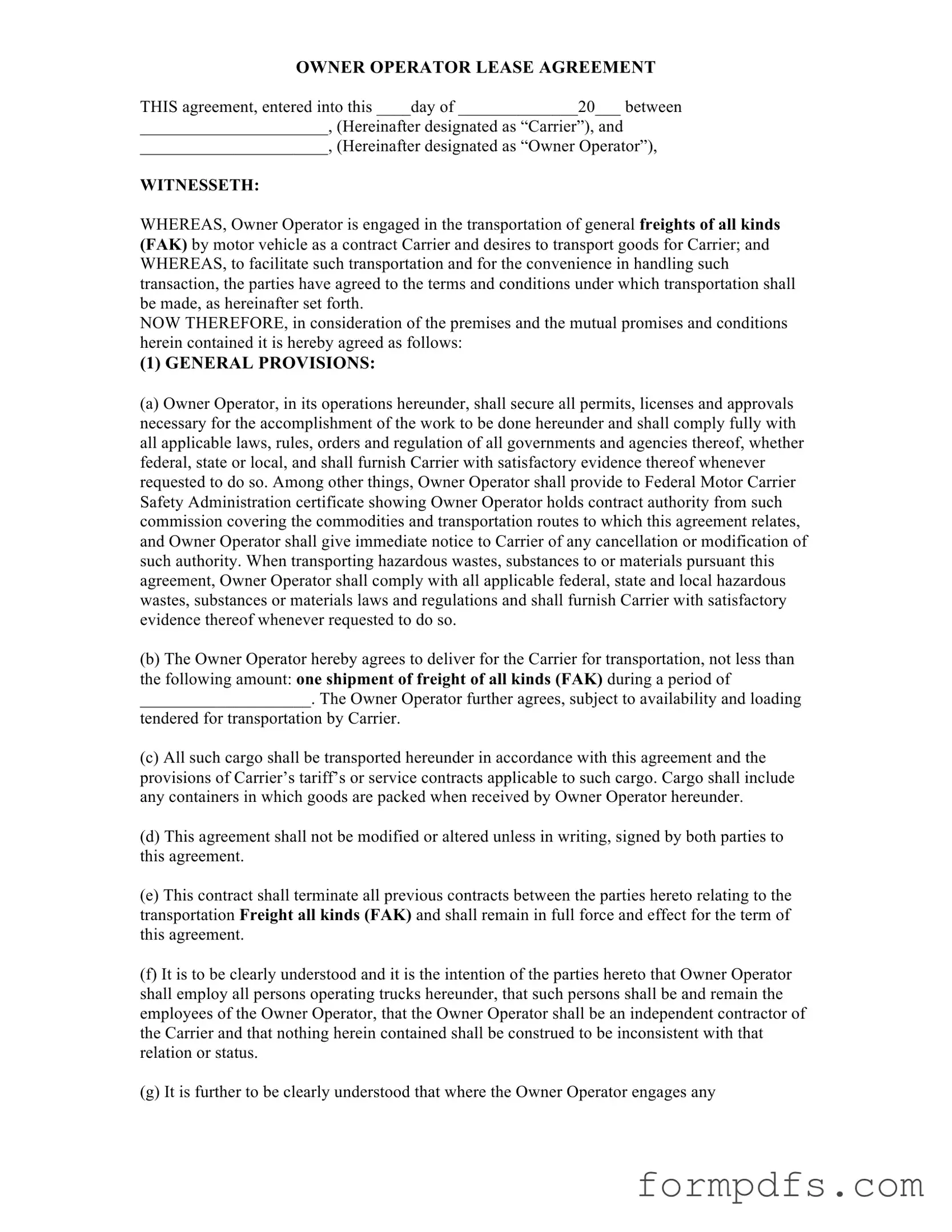What is an Owner Operator Lease Agreement?
An Owner Operator Lease Agreement is a legal document that outlines the terms and conditions under which an independent truck owner (Owner Operator) agrees to transport goods for a freight carrier (Carrier). This agreement details responsibilities, payment structures, and compliance with laws and regulations, ensuring both parties understand their obligations and rights in the transportation process.
What are the key responsibilities of the Owner Operator?
The Owner Operator is responsible for securing all necessary permits and licenses for their operations. They must comply with federal, state, and local regulations and provide proof of compliance to the Carrier upon request. Additionally, the Owner Operator must ensure the safe transportation of goods, maintain appropriate insurance coverage, and handle any hazardous materials according to legal standards.
How is compensation structured in the agreement?
Compensation for the Owner Operator is based on the rates and charges outlined in a rate schedule attached to the agreement. The Carrier agrees to pay the Owner Operator within sixty days of receiving an invoice for services rendered. This structure ensures clarity regarding payment timelines and amounts for the transportation services provided.
Can the Owner Operator assign their contract to another party?
No, the Owner Operator cannot assign their contract to another party without obtaining written consent from the Carrier. This provision protects the Carrier's interests by ensuring that they maintain control over who is responsible for transporting their goods.
What happens if there is a loss or damage to the goods during transportation?
The Owner Operator assumes liability for any loss or damage to the goods while they are in their care. They are responsible for reimbursing the Carrier for the value of any goods lost or destroyed during transportation. This clause emphasizes the importance of careful handling and transportation of the cargo.
How are disputes handled under the agreement?
Disputes arising from the Owner Operator Lease Agreement are typically governed by the laws of the state specified in the agreement. All notices related to disputes must be provided in writing, ensuring that both parties have a clear record of communications. This process helps facilitate resolution and maintain professionalism throughout any disagreements.
